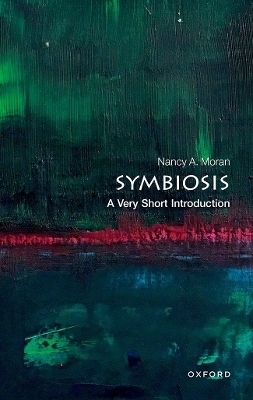
Symbiosis
Oxford University Press (Verlag)
978-0-19-286375-1 (ISBN)
- Noch nicht erschienen (ca. Januar 2026)
- Versandkostenfrei innerhalb Deutschlands
- Auch auf Rechnung
- Verfügbarkeit in der Filiale vor Ort prüfen
- Artikel merken
Very Short Introductions: Brilliant, Sharp, Inspiring
Symbiosis, the sustained and intimate associations between unrelated life forms, is now recognized as a ubiquitous phenomenon, one that has shaped evolution since the origin of life and that continues to affect all species. This overview of symbiosis starts with a quick history of relevant early discoveries and researchers, and considers why symbiosis was so long neglected as a respectable topic of biological research and why it was a controversial topic. Today, symbiosis is widely appreciated as being everywhere in nature and as a pervasive influence on ecological communities. One chapter explores the fundamental drivers that lead to symbiotic associations, using examples ranging from sap-feeding insects to marine flatworms to coniferous forests to illustrate the nature of services exchanged between symbiotic partners. Another considers the evolutionary stability of symbiotic partnerships, which can quickly decay in the face of symbiotic cheating.
Certain symbioses that have had an outsized impact on life on Earth, and on Earth itself, are given particular attention. A full chapter is devoted to the most consequential of all symbioses: the origin of the complex (eukaryotic) cell, and the origin of chloroplasts and green plants. Other triumphs of symbiosis described include the root-fungus associations that enabled plants to colonize land 450 million years ago, gut microbial communities that empower animals to utilize a wide range of foods including plant fiber wood and sap, and coral-algal symbioses that resulted in the rise of coral reefs.
Analyses of genomic DNA have been important in symbiosis research, and this Very Short Introduction describes these molecular approaches, explaining how they sparked discovery of previously unknown symbionts, including those in our own bodies. Molecular data also have enabled us to understand the roles of symbionts within hosts, and the ages of symbiont-host associations, which range from hundreds of millions of years to very recent.
ABOUT THE SERIES: The Very Short Introductions series from Oxford University Press contains hundreds of titles in almost every subject area. These pocket-sized books are the perfect way to get ahead in a new subject quickly. Our expert authors combine facts, analysis, perspective, new ideas, and enthusiasm to make interesting and challenging topics highly readable.
Nancy A. Moran is the Raymer Endowed Chair in Integrative Biology at the University of Texas-Austin. She holds a Ph.D. from the University of Michigan. Her honors include membership in the US National Academy of Sciences and the American Academy of Arts and Sciences, a MacArthur fellowship, the International Prize for Biology, and the Selman Waksman award in microbiology. Moran's research is on symbiosis, especially that between insects and microbes. She explores how symbioses have shaped and continue to shape insect evolution and insect populations.
1: Exploring Symbiosis
2: The Currencies of Symbiosis
3: The Acquisition and Nurture of Symbionts
4: Why cooperate? -- The conundrum of symbiosis
5: Symbiotic origins of complex cells
6: Gaining and losing symbiosis
7: Symbioses transforming Earth
8: Symbiosis in Evolution
References and Further Reading
| Erscheinungsdatum | 05.03.2024 |
|---|---|
| Reihe/Serie | Very Short Introductions |
| Verlagsort | Oxford |
| Sprache | englisch |
| Maße | 111 x 174 mm |
| Themenwelt | Medizin / Pharmazie ► Medizinische Fachgebiete ► Mikrobiologie / Infektologie / Reisemedizin |
| Naturwissenschaften ► Biologie ► Evolution | |
| Naturwissenschaften ► Biologie ► Mikrobiologie / Immunologie | |
| Naturwissenschaften ► Biologie ► Ökologie / Naturschutz | |
| ISBN-10 | 0-19-286375-4 / 0192863754 |
| ISBN-13 | 978-0-19-286375-1 / 9780192863751 |
| Zustand | Neuware |
| Haben Sie eine Frage zum Produkt? |
aus dem Bereich


